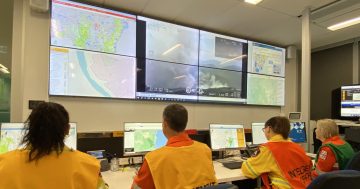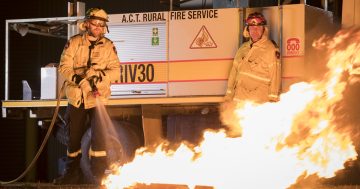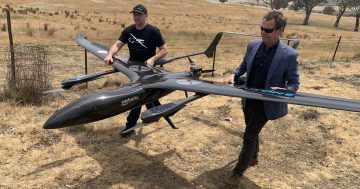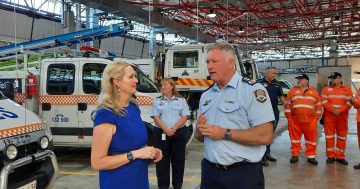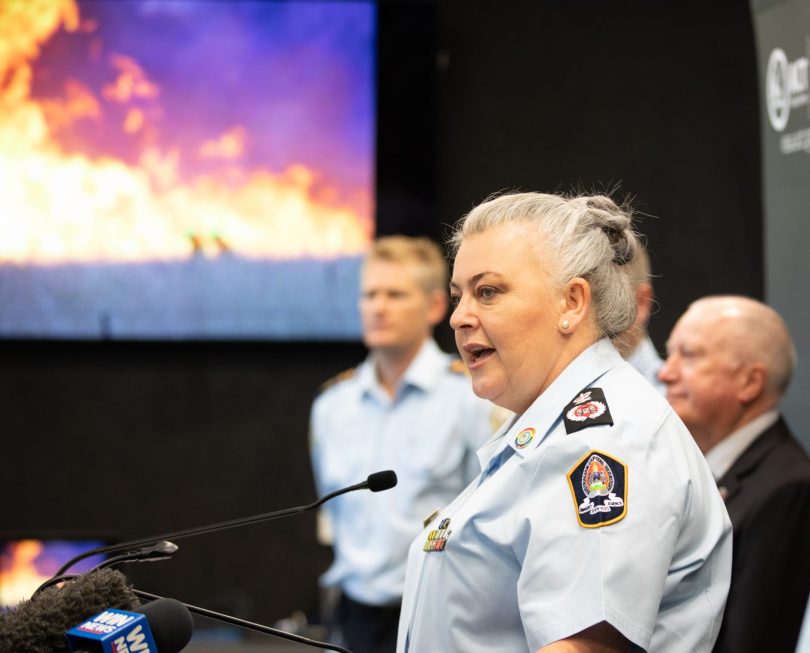
ESA Commissioner Georgeina Whelan and her fire chiefs at the launch of the bushfire season. Photo: Michelle Kroll.
The bushfire season has officially started a month later than normal, but without the dire warnings that accompanied the devastating bushfires that ravaged large parts of the ACT and surrounds earlier this year.
Commissioner of the ACT Emergency Services Agency (ESA) Georgeina Whelan joined her colleagues from the ACT Rural Fire Service, ACT Parks and Conservation Service, ACT Fire and Rescue and the Minister for Police and Emergency Services, Mick Gentleman, to open the season on 1 November.
Acting chief of the ACT Rural Fire Service, Rowan Scott, said welcome rain from the declaration of a La Niña will continue to bring favourable conditions to douse potential fires.
“This year we’ve been quite lucky with the rain that we have had,” Mr Scott said.
“There’s a lot of moisture in our fuels, as well as the heavy fuels and the finer fuels on the surface, but also the moisture levels in the soil structure is quite good. In some areas, it’s actually saturated, so the water is no longer going into the soil, it’s actually running off.”
He said temperatures will be lower than last year and increased cloud cover and will result in reduced fire danger rating periods.
“We won’t have those really extreme days that we had last year. We had 26 total fire ban days last year which was a record for the ACT.”
However, the high risk of grass fires has been reiterated by all parties during the launch of the bushfire season.
“Our grass fire risk this year is significant,” Mr Scott said. “You only have to drive around the ACT and already you see a very high, thick and dense grass cover. We’ll be working with our colleagues in the ACT Parks and Conservation Service, where we will deploy and pre-position vehicles in places of high risk on those days.”
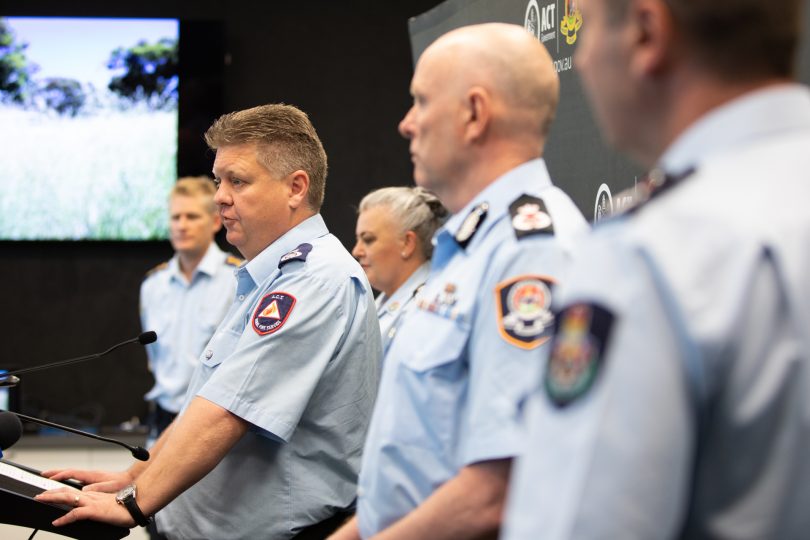
ACT Rural Fire Service acting chief Rowan Scott at the bushfire season launch. Photo: Michelle Kroll.
Commissioner Whelan warned that grass growth due to recent rain could increase the risk of fast-moving grass fires this summer. She also urged homeowners to work with fire agencies and rural landholders by preparing for the fire season, highlighting that we cannot be complacent despite forecasts for a wet start to the fire season.
“Bush and grass fires can strike at any time and it is vitally important to be prepared,” Commissioner Whelan said.
“Update your bushfire survival plan and have the conversation with your family about what you will do during a fire, including how you will stay informed, when you will leave, what you’ll take.
“We always try to prepare for the worst, that way we are ready for anything.”
Commissioner Whelan said the ACT Rural Fire Service has been working with rural landholders to ensure they are prepared for the upcoming season by conducting hazard reduction burns and updating farm bushfire plans.
“Farm bushfire plans are vital should we need to access these properties in the case of fire protection. They use this information to understand what assets require immediate protection, the firefighting resources available on the property and the mapping of the property,” she said.
The ACT will also continue to contract three aircraft as per last season. There will be one medium helicopter jointly shared with NSW Rural Fire Service and one medium helicopter contracted by ACT Rural Fire Service.
The Specialised Intelligence Equipped (SIG) visual and thermal camera will also contracted by ACT Rural Fire Service.
All aircraft are for a minimum 84 days and can be extended for additional periods in seven-day blocks.
Start dates are yet to be determined and are activated when the risk of fire is increased to the ACT Community.
From 1 November, rural landholders must obtain a free permit from ACTRFS before conducting hazard reductions, including pile burning. To apply for a permit call 6207 8609 or send an email request to rfs@act.gov.au.
Information and tips on how you can prepare for this bushfire season are on the ACT ESA website.












